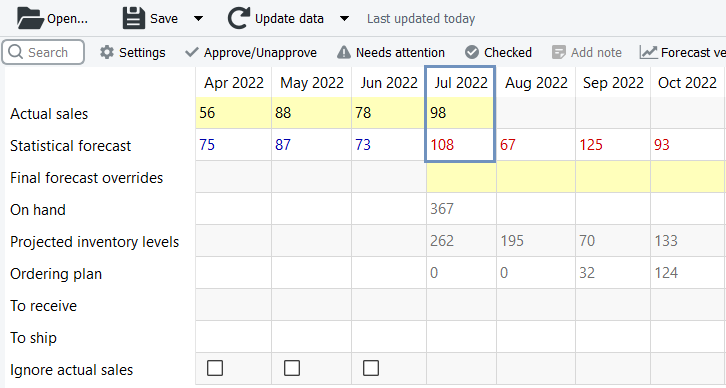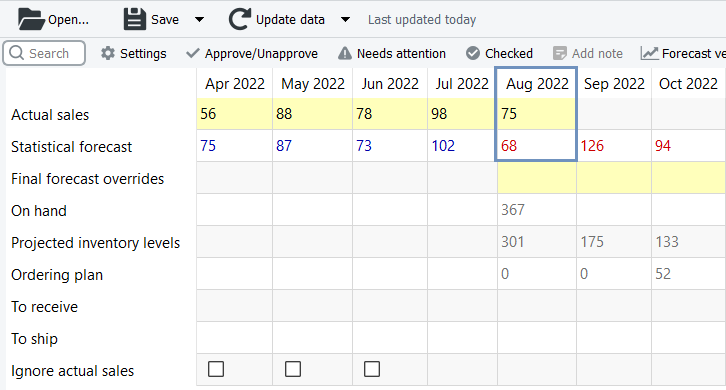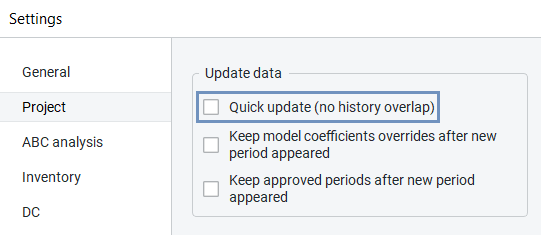Table of Contents
3.3. Updating a Project
Updating a project is one of the commonly used operations. After a project has been created based on the available sales history, you will inevitably need to update it with a new sales period or inventory information in the future.
Update latest periods or Full reimport
There’re two options you can use to update project data:
- Update data (Update latest periods)
- Full reimport

You should do the Full reimport if the scope of the project has been extended. For example:
- A new item/warehouse or channel has been added with its sales history that was not previously stored in Streamline.
- Item/location codes have been changed.
- Older historical data has been changed (from the time periods that aren’t covered with the regular data update).
In any other cases, an Update latest periods is enough to synchronize your data correctly. For example, you add a new warehouse or channel without any sales and the stock-list has not been changed.
Update data
To synchronize your project with the data source, click the Update data button in the Toolbar.
As you update the data, Streamline shows the date of the last relevant transaction in the data source in the program title (see figure below).

Example
Let’s consider an example project created from an Excel file. In the project, we have the forecast as of July 2022 (see figure below).

- We added a new sales period (August 2022) to the Excel file and saved the changes.
- Now, click the Update data button to load the new sales period in Streamline (see figure below).

Now, we have the forecast and the replenishment plan updated.
Quick Update
If your data update takes a significant time you can set data update to a Quick update option which updates only the current period (and missed periods including the current periods if they exist) of the historical data.
It can be found in the Program settings under the Program Tab. To get a better understanding what to choose between regular Update and Quick update see a Program Settings article.

Auto-update
There is an ability to automate updating process in Streamline.
If you have Streamline Server setup you can use the Automation Tab in the Settings to set a specific time or frequency period for the update. (see figure below)

For desktop users who don’t have the Streamline Server, there is an option to use the command line and create a .bat file so you can run it with Windows Task Scheduler (or .sh file with Automator for MacOS users) for an automated update process.
A command for the .bat file would be the following:
“GMDH Streamline.exe” c:\Project\file.gsl /update /save
Reimporting a project
To reimport a project completely:
- Open your project.
- Go to the Toolbar and select the dropdown menu of the Update data button.
- Choose the “Full re-import” option (see figure below):
